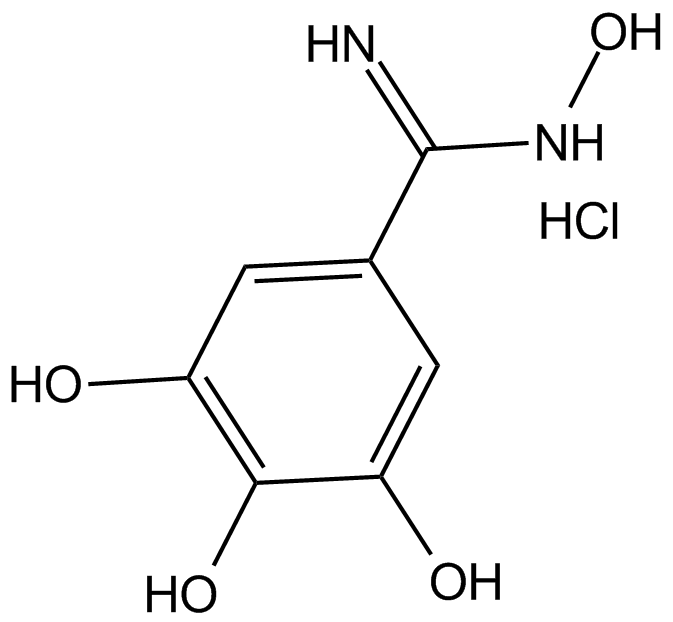Trimidox (hydrochloride) (Synonyms: CF 233 (hydrochloride)) |
| Catalog No.GC16006 |
specific ribonucleotide reductase inhibitor
Products are for research use only. Not for human use. We do not sell to patients.

Cas No.: 95933-75-8
Sample solution is provided at 25 µL, 10mM.
Trimidox (hydrochloride) is a specific ribonucleotide reductase inhibitor [1][2][3].
Ribonucleotide reductase is the rate-limiting enzyme for de novo DNA synthesis. This enzyme is linked with proliferation and malignant transformation, and is a common target for cancer chemotherapy [1][2].
Trimidox (hydrochloride) is a specific ribonucleotide reductase inhibitor. Trimidox inhibited the activity of ribonucleotide reductase in extracts of L1210 cells with IC50 value of 5 μM. Trimidox was cytotoxic to L1210 cells with IC50 value of 7.5 μM [3]. In human promyelocytic leukemia HL-60 cells, Trimidox inhibited cell growth with IC50 value of 35 μmol/L. Trimidox (50 μmol/L) reduced deoxyguanosine triphosphate (dGTP) and deoxycytidine triphosphate (dCTP) pools to 24% and 39% of control values, respectively. Trimidox and tiazofurin produced synergistic growth inhibitory activity, suggesting trimidox in combination with tiazofurin might be useful in the treatment of leukemia [1]. In several human leukaemia cell lines, Trimidox induced apoptosis, significantly increased cytochrome c release and activated caspase-3 and -9 [2].
In mice bearing intraperitoneally transplanted L1210 leukemia, Trimidox significantly increased the life span in a dose-dependent way [3].
References:
[1]. Szekeres T, Fritzer M, Strobl H, et al. Synergistic growth inhibitory and differentiating effects of trimidox and tiazofurin in human promyelocytic leukemia HL-60 cells. Blood. 1994 Dec 15;84(12):4316-21.
[2]. Kanno S, Uwai K, Tomizawa A, et al. Trimidox induces apoptosis via cytochrome c release in NALM-6 human B cell leukaemia cells. Basic Clin Pharmacol Toxicol. 2006 Jan;98(1):44-50.
[3]. Szekeres T1, Gharehbaghi K, Fritzer M, et al. Biochemical and antitumor activity of trimidox, a new inhibitor of ribonucleotide reductase. Cancer Chemother Pharmacol. 1994;34(1):63-6.
Average Rating: 5 (Based on Reviews and 2 reference(s) in Google Scholar.)
GLPBIO products are for RESEARCH USE ONLY. Please make sure your review or question is research based.
Required fields are marked with *




















